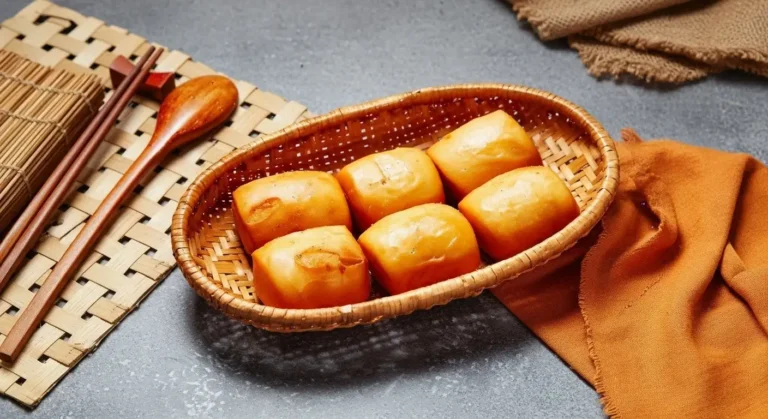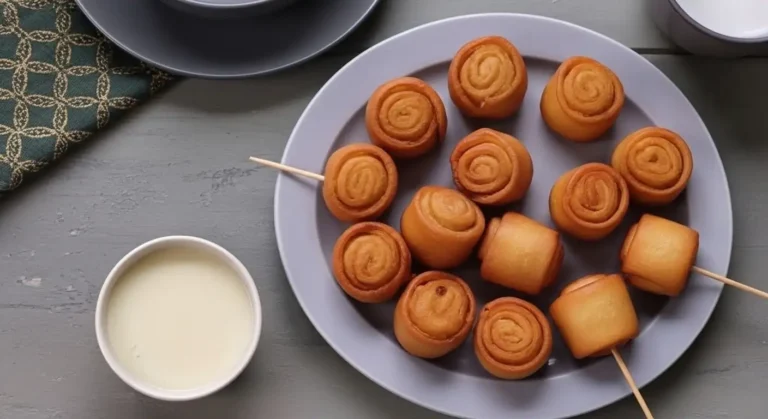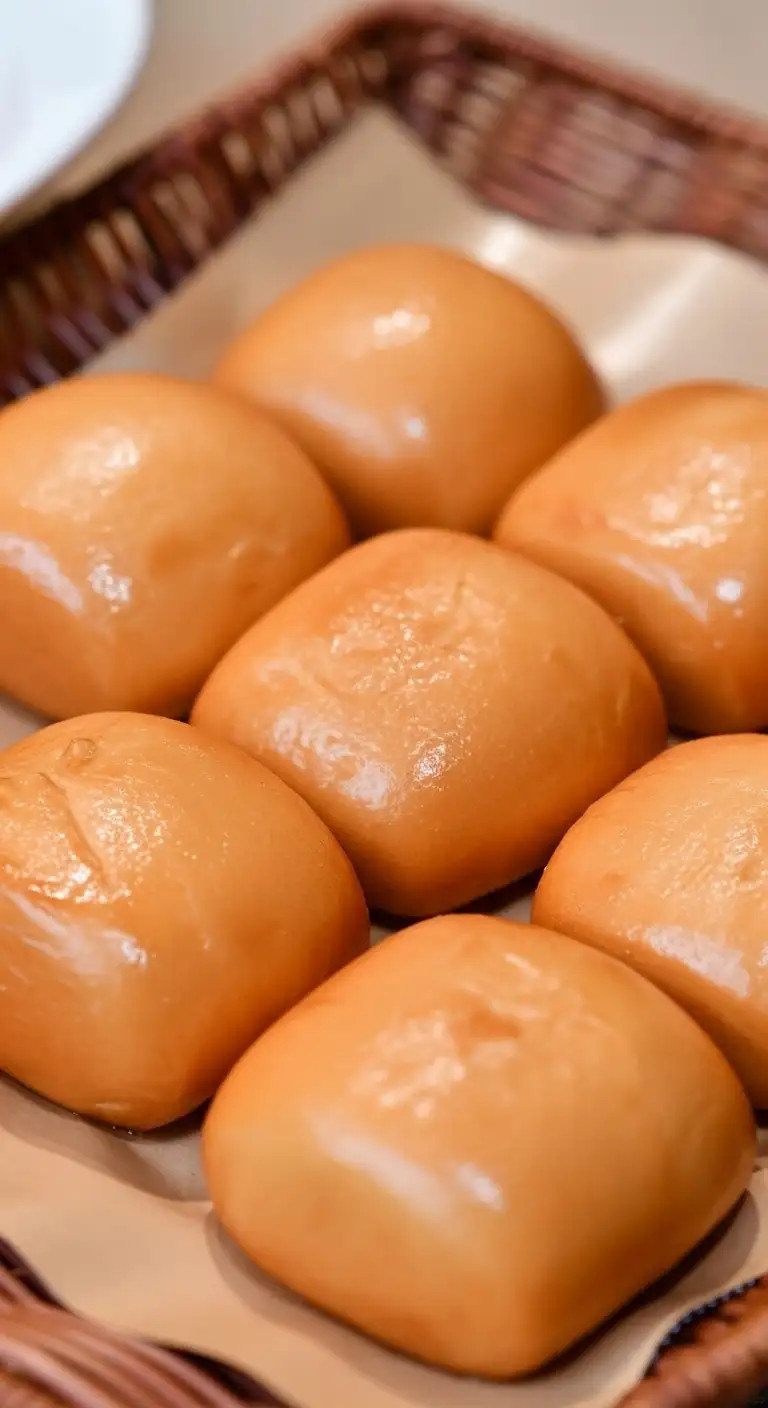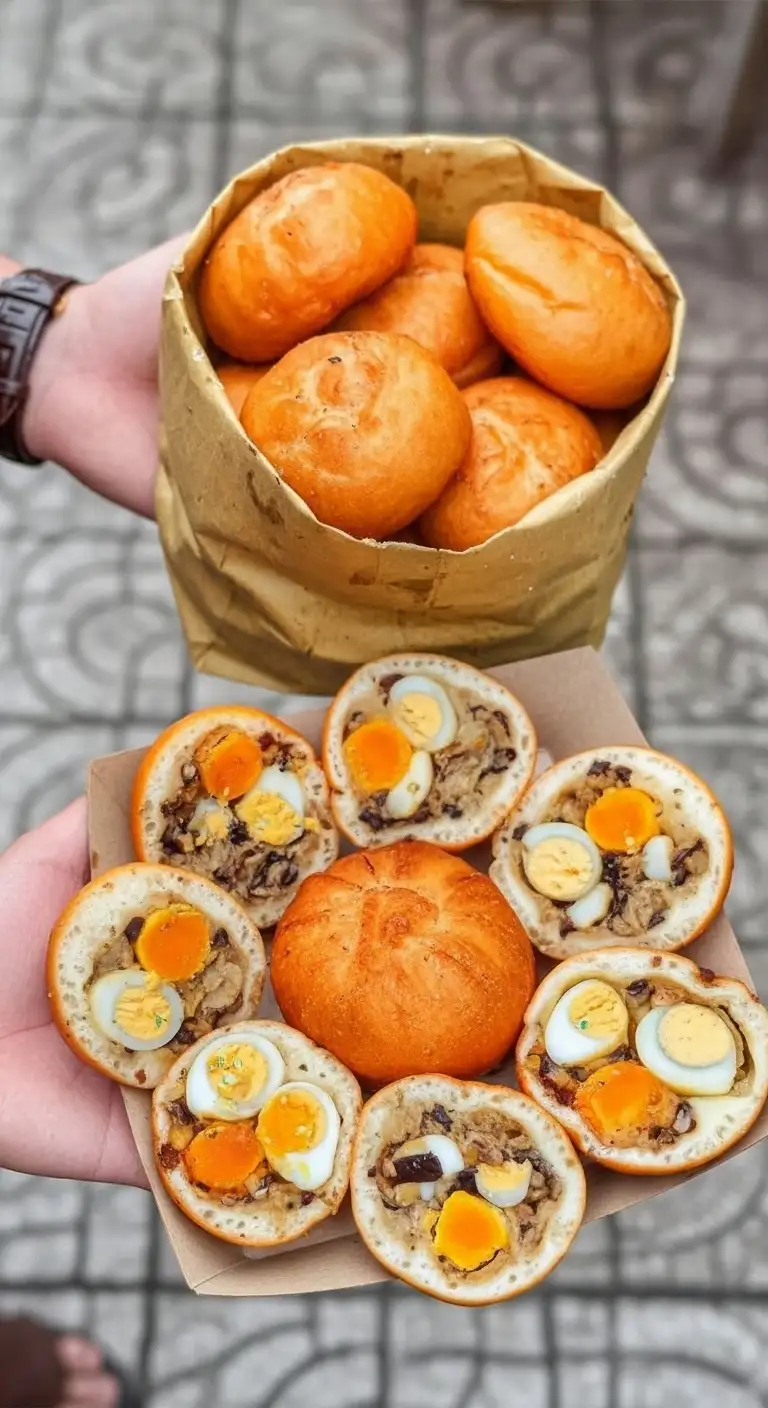Bánh Bao Chiên (pronounced Ban Bow Chee-en) is a beloved Vietnamese snack that takes the soft, fluffy, Chinese-influenced steamed bun (Bánh Bao) and introduces a tantalizing layer of crispness. The addition of “Chiên” (which means “fried” in Vietnamese) is a simple culinary step that elevates the bao to a delightful street food sensation, offering a perfect contrast of textures.

Bánh Bao Chiên: The Basics
What it is: Bánh Bao Chiên is essentially a deep-fried or pan-fried version of the classic Bánh Bao. The frying process results in a gorgeous golden-brown exterior that is crispy and chewy, while the interior dough remains soft and absorbent of the filling’s juices.
The Dough: The dough starts the same as a traditional Bánh Bao—a yeast-leavened flour dough, often enriched with milk, sugar, and sometimes baking powder, to achieve a soft, white, and slightly sweet texture.
The Filling (Nhân Bánh Bao): The filling is typically savory and hearty, reflecting the traditional Bánh Bao filling:
Ground Pork: Seasoned with fish sauce, oyster sauce, sugar, and black pepper.
Wood Ear Mushrooms: For a pleasant, slightly crunchy texture.
Quail Egg (or Hard-Boiled Egg Slice): A signature, substantial component.
Chinese Sausage (Lạp Xưởng): Sliced sweet and savory sausage, crucial for flavor.
Other Vegetables: Sometimes include chopped onion, jicama, or glass noodles.
The Transformation: After the bun is assembled, instead of being steamed to its pillowy white perfection, it is pan-fried or deep-fried until the exterior crust is beautifully crisp and golden.
Variations of Bánh Bao Chiên
While the savory pork filling is the gold standard for Bánh Bao Chiên, a few popular variations exist, mirroring the diversity found in their steamed counterpart:
| Vietnamese Name | English Translation | Key Filling Ingredients | Notes |
|---|---|---|---|
| Bánh Bao Chiên Nhân Thịt | Fried Bao with Meat Filling | Ground pork, wood ear mushroom, quail egg, Chinese sausage. | The most common and classic savory version. |
| Bánh Bao Chiên Nhân Chay | Fried Vegetarian Bao | Tofu, mung bean paste, glass noodles, assorted mushrooms (shiitake, wood ear), carrots, and peas. | A popular meatless option, seasoned with soy sauce. |
| Bánh Bao Chiên Nhân Xá Xíu | Fried Bao with BBQ Pork Filling | Sweet and savory Chinese BBQ pork (Xá Xíu). | A sweeter, Cantonese-style filling variation. |
| Bánh Bao Chiên Nhân Ca-Dê | Fried Bao with Custard Filling | Egg yolk, coconut milk, and sugar. | A less common, purely sweet version with a creamy, rich filling. |

How to Eat Bánh Bao Chiên
Bánh Bao Chiên is a hot, convenient, and deeply satisfying street snack.
Serving: The buns are best eaten immediately while they are piping hot, fresh out of the fryer, to enjoy the maximum textural contrast between the crispy crust and the soft, moist interior.
Dipping Sauces: The savory filling is complemented by dipping sauces, which are essential for adding moisture and extra flavor:
Chili Sauce (Tương Ớt): A squirt of Vietnamese chili sauce (often the ubiquitous red rooster Sriracha or a local, sweeter version) is the most popular choice.
Soy Sauce (Nước Tương): A light drizzle of soy sauce or a sweet, diluted soy sauce mixture.
Sweetened Fish Sauce (Nước Mắm Pha): Less common than with other Vietnamese dishes, but used by some to provide a salty, tangy, and sweet profile.
Consumption: Because of their sturdy, fried exterior, Bánh Bao Chiên are often less messy than the steamed version and can be easily eaten by hand. It makes for an excellent quick breakfast, a mid-day energy boost, or a late-night treat.
Regional Differences
The core concept of Bánh Bao, and by extension Bánh Bao Chiên, is widely available across Vietnam, but the flavor profile of the fillings and the dough can subtly shift according to regional culinary traditions.
| Region | Flavor Profile of the Bánh Bao (Steamed/Fried) | Notable Local Variations |
|---|---|---|
| Northern Vietnam (Bắc) | Subtle and Traditional. The dough may be slightly firmer, and the filling less heavily seasoned. The flavor focuses on savory ground meat and mushroom, with sweetness being more restrained. | Bánh Bao itself tends to be slightly smaller and adheres closely to the Chinese-influenced roots. Bánh Bao Chiên is less common than the steamed version as a staple. |
| Central Vietnam (Trung) | Rich and Bold. Central Vietnamese cuisine, generally being more complex and spicier, might feature fillings with a bit more pepper or a touch of heat. | Bánh Bao Bánh Vạc (White Rose Dumplings): While technically a different dish (using rice paper and steamed), the region is known for this unique dumpling variant, particularly in Hội An, which demonstrates a local take on the Bánh Bao name. |
| Southern Vietnam (Nam) | Sweet and Rich. The dough itself is often sweeter, reflecting the Southern preference for sugar in savory dishes. The filling tends to be more generous with fat and rich ingredients like whole quail eggs and thick slices of Chinese sausage. | The Bánh Bao Chiên is extremely popular in the South (like Ho Chi Minh City) as a street food, where vendors are more likely to offer modern or varied fillings, including sweet fillings like Ca-Dê (custard). |




